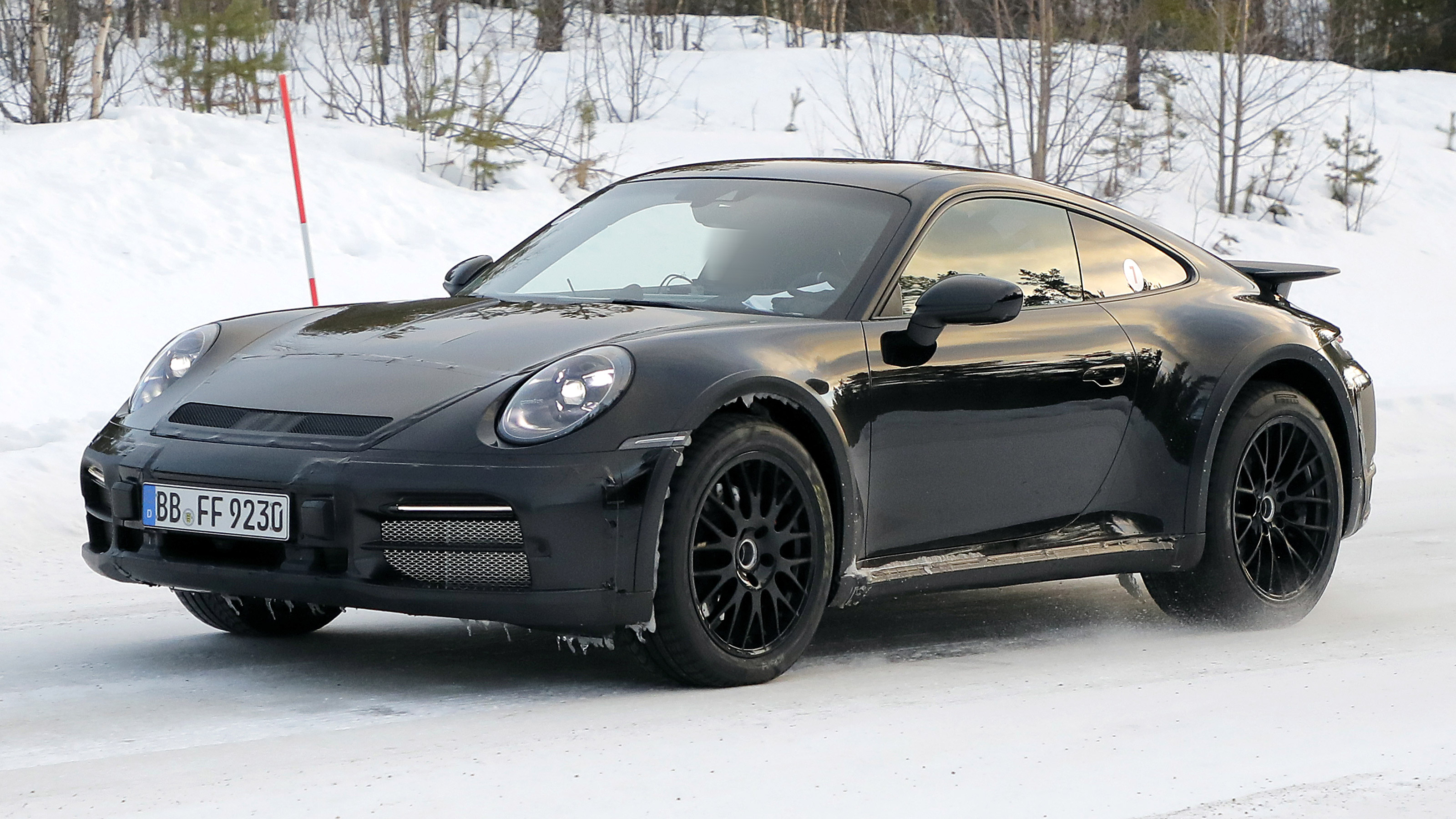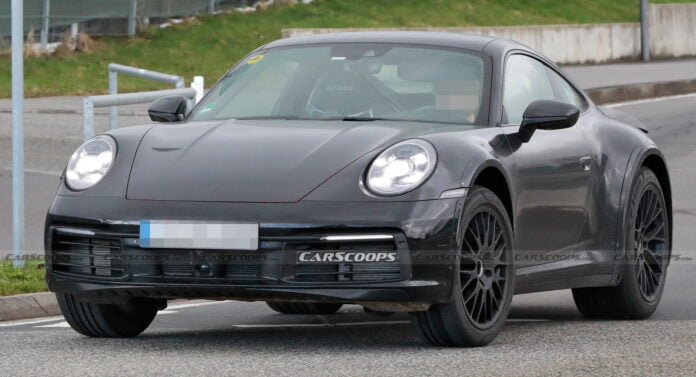The Porsche 911 is among the most popular sports cars in the historical past, but the German company wants to give its icon some off-road capability with a new ‘Safari’ model.
We’ve already seen all-terrain ‘Safari’ 911 testing previously, but these spy snaps are our finest look yet at the jacked-up, rally-inspired sports car as it evolves.

Porsche first introduced the Safari moniker in 2012, when it developed the 911 Vision Safari concept. The notion, however, was kept secret from us until November 2020, when it debuted a slew of never-before-seen exhibition cars and concepts. Also, don’t expect the 911 Safari or Dakar to have many similarities with the Singer ACS. It will be a standard 911 with a higher suspension and other mechanical changes.
The Safari version will have redesigned front and rear bumpers, new air intakes in the engine hood, and wider side sills than the standard 911. There are also many end pipes in the exhaust system. A modest rear wing, similar to some non-turbo 911 cars, can also be seen in the model.
The most noticeable modification in the impending redesigned 992-generation 911 is the increased ride height. This should allow the 911 Safari to handle difficult terrain in a way that few other sports cars can. The wheel arches have been enlarged with black plastic body cladding, and a more aesthetically pleasing front bumper has been installed as part of the makeover.
There’s room for big off-road rubber, but Porsche has wisely installed Pirelli P-Zero tyres because it’ll be tested on the Nurburgring. The new pictures also show Fuchs-style five-spoke wheels, most likely as a nod to the company’s 1978 Porsche 911 SC ‘Safari’ rally vehicle.
Knowing that the Safari’s rear end is still camouflaged, we anticipate a reworked lower bumper and extra plastic body protection. This experimental prototype looks to have Porsche’s SportDesign rear bumper, with the number plate set higher up, however it’s unclear whether this extra style package will be available with the facelift. There’s also a new rear spoiler, albeit, unlike the original Safari, it’s not a ducktail spoiler.

There are no air ducts integrated into the rear haunches, implying that this test car could be powered by either the two-wheel-drive Carrera 2S or the four-wheel-drive Carrera 4S. This would imply a power output of either 380bhp or 444bhp. The 4S’s four-wheel-drive setup is the most likely option for maximum off-road capability.
While we don’t have performance figures, the normal Carrera 4S with Porsche’s eight-speed PDK dual-clutch transmission sprints from 0-62mph in 3.4 seconds when equipped with the Sport Chrono Pack – we’d expect a little slower time for a 911 Safari, but not by much.
Given the decent reaction Porsche, expert Singer had when debuting the ACS – a modern-day homage to Porsche’s 911 SC and 959 rivals in the Paris-Dakar Rally – a modernized Safari 911 may make an appealing business case for Porsche. The German automaker had already considered reviving the classic 1978 Porsche 911 SC ‘Safari’ rally vehicle, with a 2012 design based on Porsche’s rear-engine sports car.
The 911 Safari is one of two all-terrain high-performance sports cars in the works – we just spotted the Lamborghini Huracan Serrato, a raised V10-powered off-road special that will see the Huracan’s dying days.













